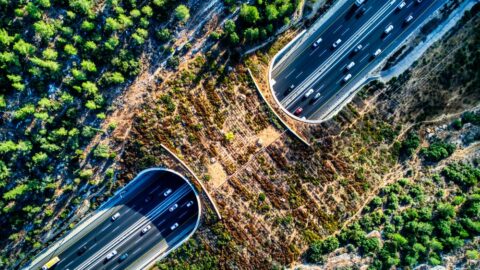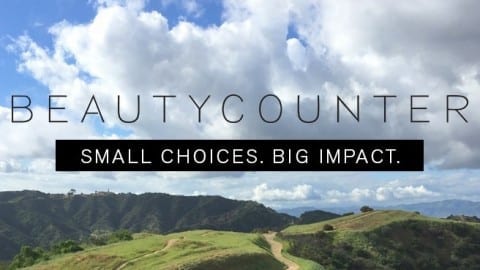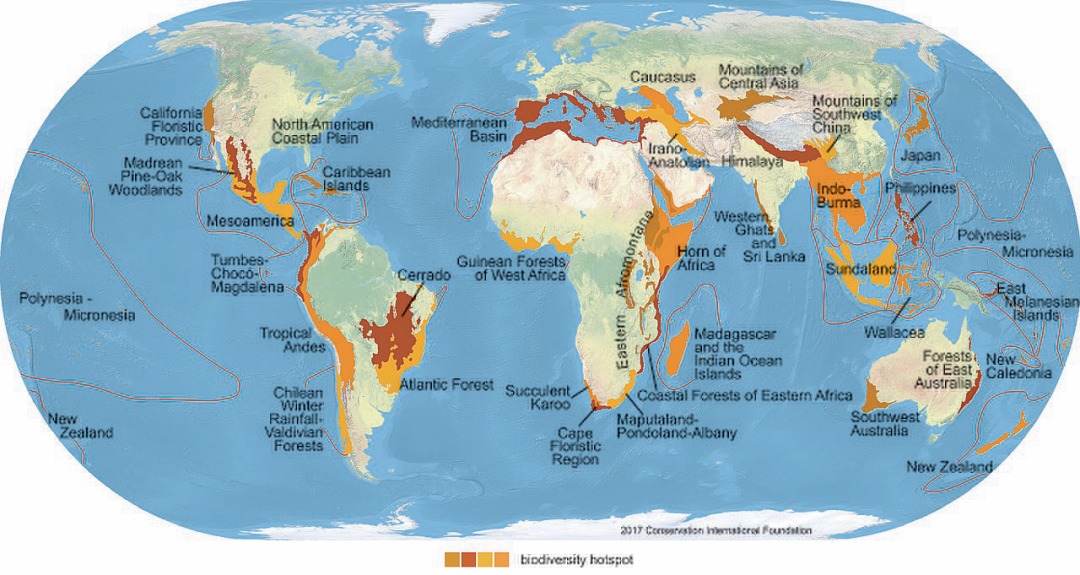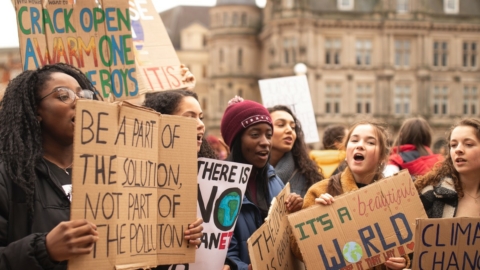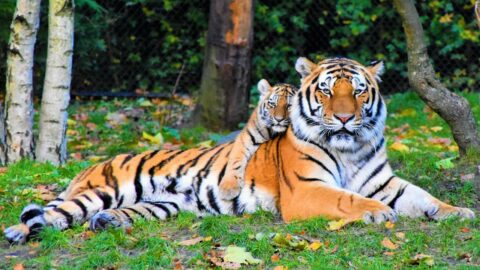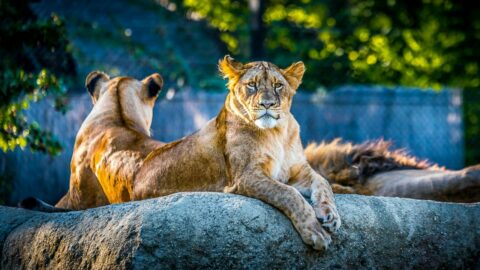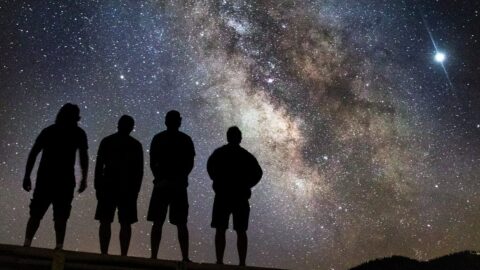Biodiversity, the vibrant tapestry of life that envelops our planet, stands at a pivotal moment in its history. This article offers a comprehensive exploration into the historical and current rates of biodiversity loss, shedding light on the primary causes behind this decline. We’ll delve into the far-reaching consequences of diminished biodiversity, affecting everything from ecosystems to economies and societies. Along the way, we’ll highlight the efforts by governments, leading nonprofits, and dedicated individuals working tirelessly to mitigate this loss.
What is Biodiversity?
The definition of biodiversity, as given by the Convention on Biological Diversity (CBD), is:
“Biodiversity is the variability among living organisms from all sources including, inter alia, terrestrial, marine and other aquatic ecosystems and the ecological complexes of which they are part; this includes diversity within species, between species and of ecosystems.”
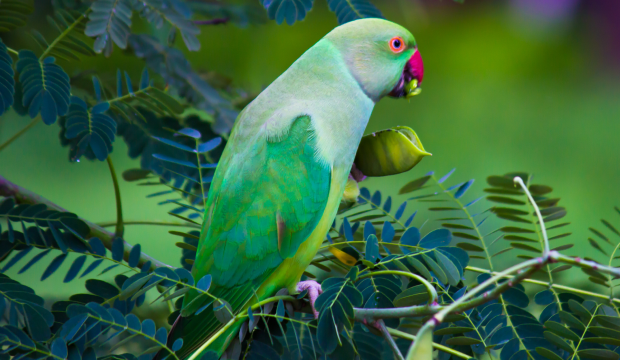
In simpler terms, Biodiversity Encompasses

Genetic Diversity
This refers to the varia8on of genes within individual species. For example, the vast range of dog breeds results from gene8c diversity within the Canis lupus familiaris species.

Species Diversity
This refers to the variety and abundance of different species within a particular region.

Ecosystem Diversity
This considers the variety of habitats, biological communities, and ecological processes that occur in the biosphere.
Why is Biodiversity Important?
There are many ways in which Biodiversity is cri8cally important to the way our planet func8ons. Biodiversity is what enables our planet to operate in the brilliantly interconnected way that it does, as a web of life, where each thing is beneficially related to another.
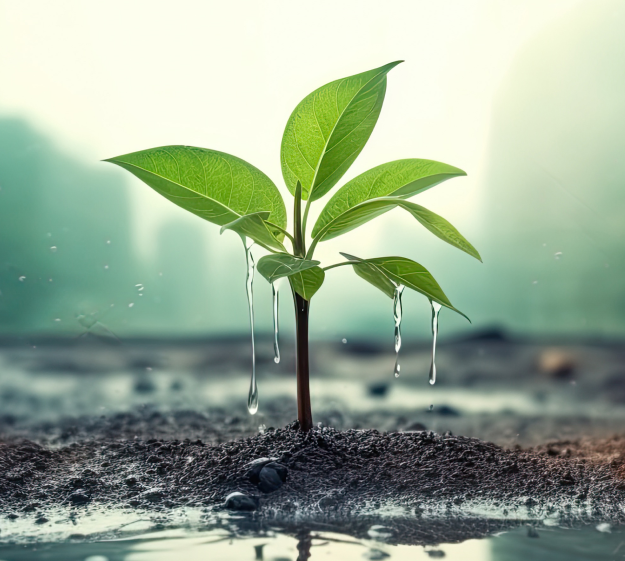
Ecosystem Services
While most of us never think of it, we benefit from biodiversity every day virtue of the “ecosystem services” that we freely receive from nature. Ecosystem services refer to the myriad benefits we gain from the natural environment.
These services fall into four primary categories:
- Provisioning Services:The tangible products we get from ecosystems, such as food, freshwater, medicinal resources, and raw materials.
- Regulating Services: The processes by which ecosystems moderate and control vital conditions and processes, like climate, water purification, and disease control.
- Cultural Services: The non-material benefits people obtain from ecosystems, including recreation, spiritual enrichment, and aesthetic values.
- Supporting Services:Fundamental ecosystem processes like soil creation, photosynthesis, and nutrient cycling that are essential for the production of all other ecosystem services.
Genetic Diversity
Diversity is nature’s tool for survival. It’s the varied genetic code within species that lets them adapt, evolve, and thrive amidst changing circumstances. However, this genetic diversity is now under siege.
As habitats fragment, populations become isolated, leading to inbreeding and a loss of genetic diversity. Human interventions further exacerbate the problem.
Take, for instance, our agricultural practices. In the quest for higher yields or specific traits, we often breed plants and animals selectively, sidelining genes that might be crucial for adaptation to unforeseen challenges. The banana, a staple fruit for many, stands as a poignant example. Most commercial bananas are of a single variety, making them highly susceptible to diseases.
By narrowing down genetic diversity, we’re not only eroding the resilience of species but also gambling with food security and ecosystem stability.
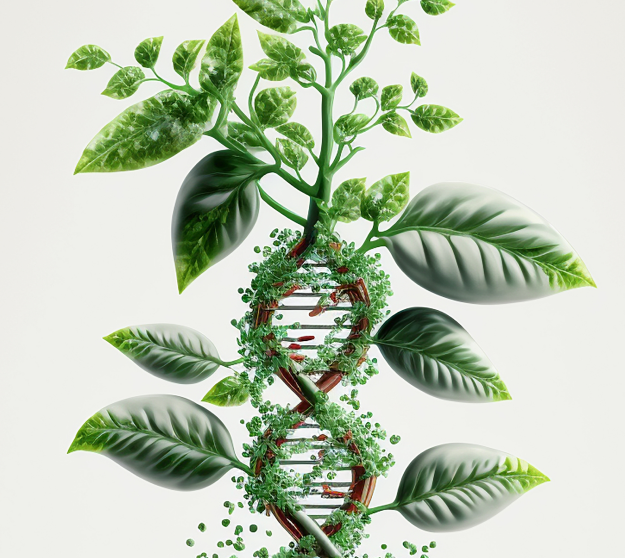
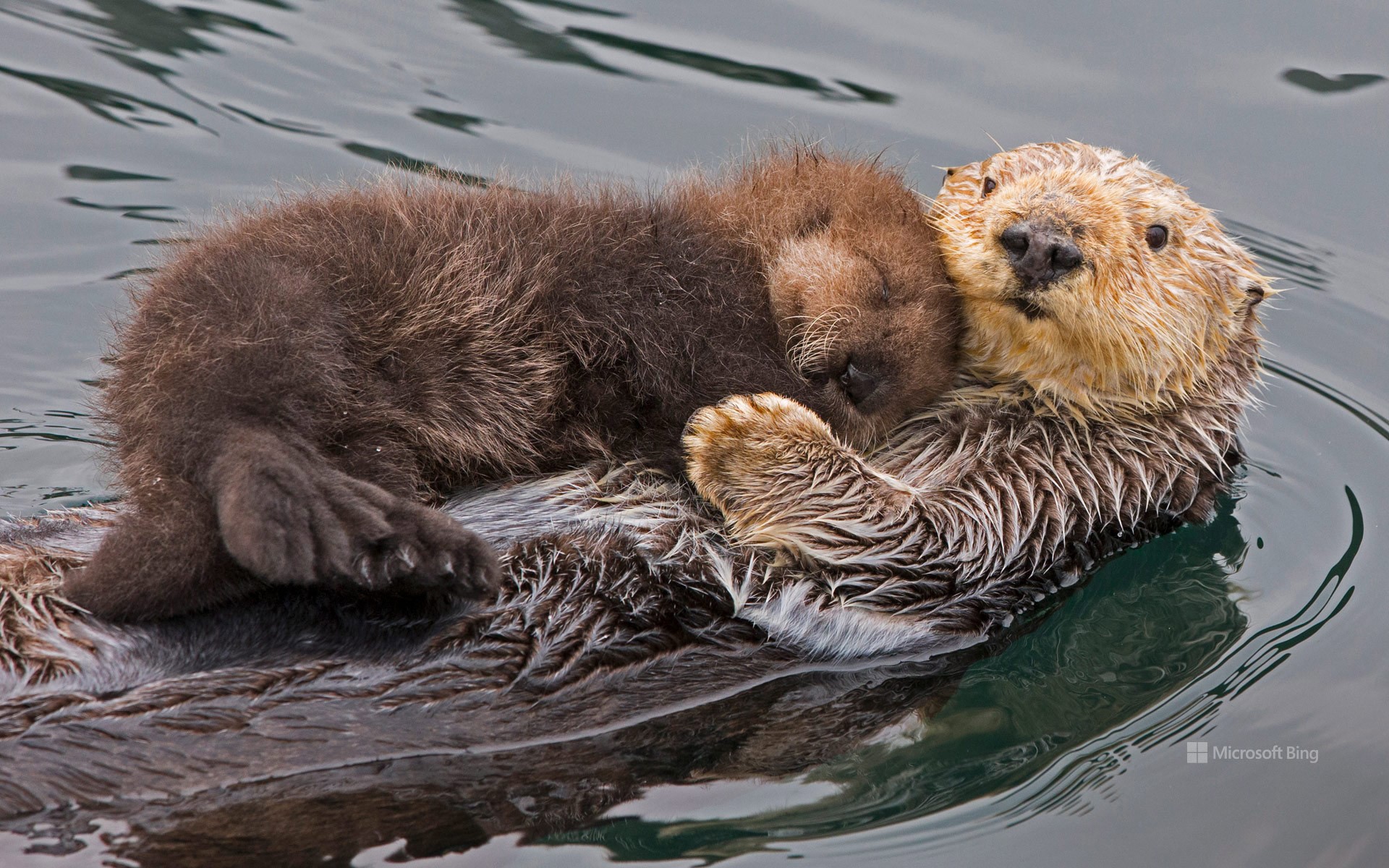
Keystone Species
A particularly vital aspect of biodiversity is the role of keystone species. These are species that have a disproportionately large effect on their environment relative to their abundance. Their presence or absence can dramatically shape the structure of an entire community.
For instance, the sea otter is a keystone species in Pacific Northwest marine ecosystems. When their populations declined due to hunting, sea urchin numbers (their primary prey) exploded, leading to the degradation of kelp forest habitats. This had cascading effects on all species that depended on the kelp forest ecosystem.
The loss of certain species can have a ripple effect, leading to the rapid decline or disappearance of other species that rely on them, either directly for food or other critical factors. This interdependence means that the loss of just a single species can disrupt an entire ecosystem, destabilizing its functions and services, and potentially leading to the decline or loss of other species within that ecosystem. In essence, biodiversity ensures that ecosystems are resilient, adaptable, and capable of providing the vital services upon which all life depends.
Biodiversity Loss Crisis
Historical vs Current Extinction Rates
Today, hear a lot about the alarmingly rapid rate of biodiversity loss. But didn’t major extinctions happen in the past too? Yes, they did. But there is a difference between “mass extinctions” and the normal, “background” extinction rate. There have been five historical mass extinctions, and some say that based on today’s extinction rate, we may be at the beginning of a sixth mass extinction. Let’s take a look.
Historical Mass Extinctions
Earth’s geological and biological history is punctuated by moments of profound loss known as mass extinctions. These are intervals when the Earth loses more than three-quarters of its species in a geologically short timeframe.
Let’s journey through these monumental events:
1st
Ordovician-Silurian Extinction
This first known mass extinction occurred due to a severe ice age that resulted in significant marine habitat loss. Nearly 85% of sea life vanished.
442 million years ago
(approx)
2nd
Late Devonian Extinction
Over 75% of species disappeared in this extinction, which spanned millions of years. Causes include changes in sea level, climate changes, and possibly a large asteroid impact.
375 million years ago
(approx)
3rd
Permian-Triassic Extinction
Often termed “The Great Dying,” this is the most severe extinction event. It wiped out over 90% of all species. Volcanic activity, leading to climate change and acidified oceans, played a significant role
252 million years ago
(approx)
4th
Triassic-Jurassic Extinction
About 80% of species were lost, paving the way for the rise of the dinosaurs. Extensive volcanic activity and climate shifts are among the prime suspects.
200 million years ago
(approx)
5th
Cretaceous-Paleogene Extinction
Iconic for bringing an end to the age of dinosaurs, this event saw the demise of around 75% of Earth’s species. The leading theory suggests a massive asteroid impact, along with volcanic activity, contributed to this mass extinction.
66 million years ago
(approx)
6th
Anthropene Extinction
Humanity has entered what many are calling Earth’s sixth major extinction, largely driven by human activities. This has likely increased species extinction rates by 100 to 1000 times the natural background rate.
In contemporary times, alarm bells are ringing about a potential sixth mass extinction. Unlike previous mass extinctions caused by natural cataclysms, this one is largely driven by human actions. A landmark book on this subject is “The Sixth Extinction: An Unnatural History” by Elizabeth Kolbert. Through rigorous research and evocative storytelling, Kolbert outlines how human activities—like habitat destruction, pollution, and climate change—are accelerating species loss at an unprecedented rate, threatening to disrupt the delicate balance of life on Earth.
1950s to current day
(approx)
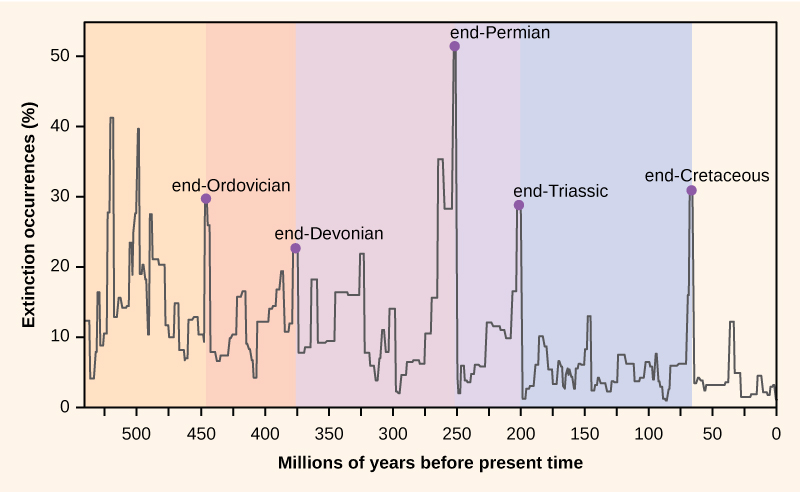
Historical “Normal” or “Background” Extinction Rates
The “normal” or “background” extinction rate refers to the natural rate at which species go extinct due to processes like predation, competition, disease, habitat changes, or other natural factors, without the influence of rapid, wide-scale disruptions like asteroid impacts or human activities. Historically, this rate has been measured using the fossil record to estimate how often species became extinct before human intervention significantly altered the environment.
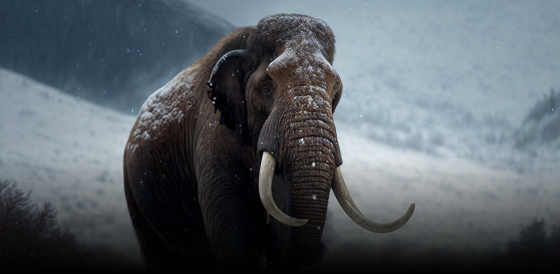
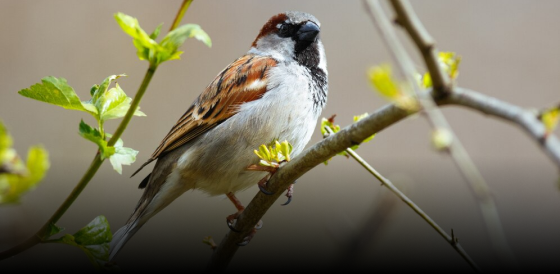
These rates are rough estimates, and the actual background rates for different groups of animals and plants can vary based on numerous factors, including the group’s overall diversity and its specific evolutionary history.
However, when we compare these background rates to current extinction rates, it becomes evident that we’re now seeing extinctions occur at a much more accelerated pace. Some estimates suggest that the current rate of extinction is tens to hundreds of times higher than the background rate, primarily due to human activities. This increased rate is what fuels concerns about a potential sixth mass extinction.
Historical “Normal” vs Today’s Alarming Extinction Rates
Historically, species’ extinction was a natural part of Earth’s ever-evolving narrative, marking the transition between geological epochs. But now, in our Anthropocene era, we’re witnessing an alarming acceleration in these rates. Recent research reveals a sobering reality: the current extinction rates dwarf the natural background rates by a staggering 1,000 to 10,000 8mes. This is not just confined to one group; from the majestic birds soaring the skies to the humble amphibians in our ponds and the vast array of plant life that sustains us, no group is spared from this decline. This rapid loss paints a grim picture of a world losing its vibrancy, diversity, and balance.
Species that have Gone Extinct
Here is the number of various animals that have gone extinct in recent times:
- Mammals: Since the 16th century, over 80 mammal species have been confirmed extinct, according to the IUCN Red List. This includes well-known species like the Pinta Island tortoise and the West African black rhinoceros.
- Birds: As of 2021, the International Union for Conservation of Nature (IUCN) Red List has documented the extinction of over 190 bird species since 1500, with many of these occurring in the past century.
- Fish: Since the year 1500, more than 30 species of fish have been declared extinct, and this number is believed to be an underestimate due to underreporting and lack of comprehensive research on aquatic species.
- Amphibians: Alarmingly, more than 100 species of amphibians are believed to have gone extinct in recent years. The rapid decline in amphibians, which include frogs, toads, and salamanders, is considered one of the most critical extinction crises today.
- Insects: Precise numbers for insect extinctions are hard to determine due to the vast number of species and lack of comprehensive studies, but it’s estimated that tens of thousands may be going extinct every decade. Recent studies have also reported a dramatic decline, with some areas experiencing up to a 75% reduction in insect biomass over the past 30 years.
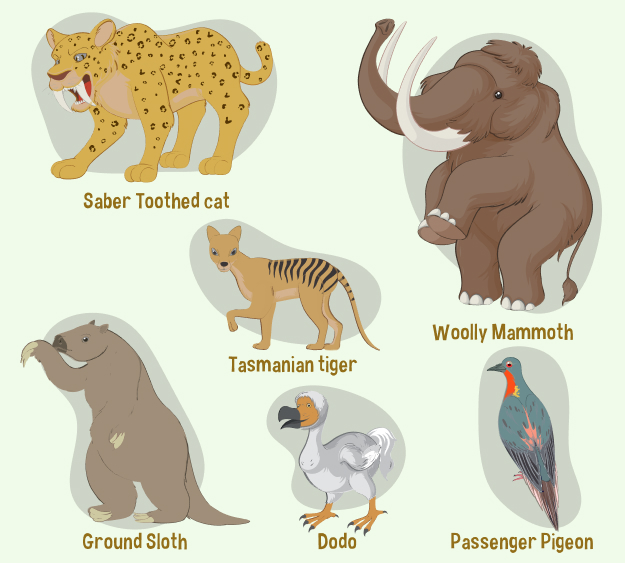
Number of Endangered Species
The number of species on the endangered list fluctuates as species are assessed, new species are discovered, and conservation efforts succeed or fail.
The International Union for Conservation of Nature (IUCN) Red List, which is one of the most comprehensive sources on global species conservation statuses, listed over 35,000 species as threatened with extinction. This includes:
In the U.S., the Endangered Species Act (ESA) is a primary mechanism for listing and protecting species at risk of extinction. As of 2022, the ESA listed over 1,600 species in the U.S. and its territories as either endangered or threatened.
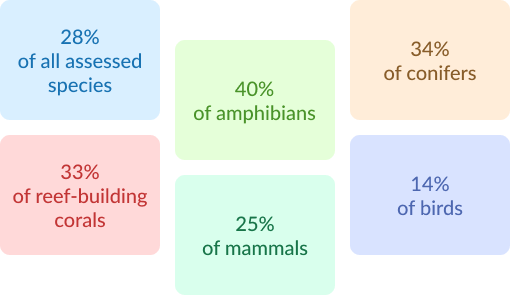
Famous Extinctions Case Studies
Case Study #1
EXTINCT: Dinosaurs
The most famous story of extinction is that of the dinosaurs. Their disappearance at the end of the Cretaceous period, around 65 million years ago, is one of the most well-known and extensively studied events in the history of Earth. Theories about their extinction have been the subject of debate and research for decades.
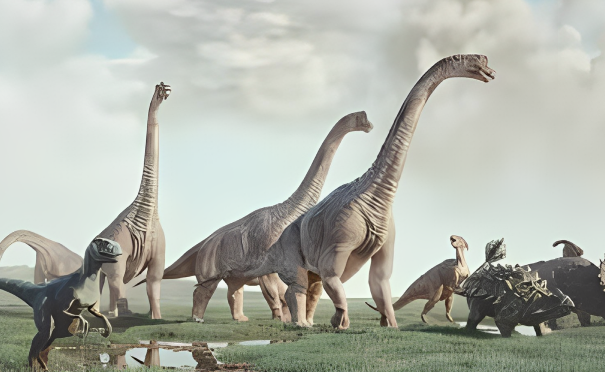
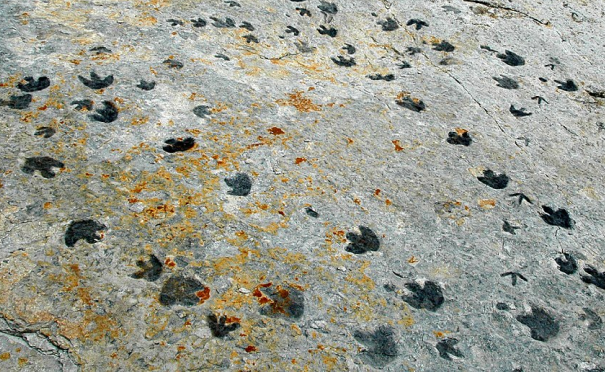
Magnitude
Dinosaurs had ruled the Earth for about 165 million years, spanning the Triassic, Jurassic, and Cretaceous periods. Their sudden extinction marked the end of an era and paved the way for mammals to become the dominant land animals.
Causes
The leading theory for their extinction is a combination of catastrophic events, most notably the impact of a massive asteroid or comet near present-day Chicxulub, Mexico. This impact would have created massive firestorms, triggered tsunamis, and thrown up a dense cloud of dust and aerosols that drastically altered the Earth’s climate.
Aftermath
Following the dinosaur’s extinction, many species that had lived in their shadows found opportunities to thrive. This event made room for the rise of mammals, which eventually led to the evolution of humans.
Legacy
The mystery surrounding the disappearance of these prehistoric giants has captivated our imagination. Today, their fossils serve as a poignant reminder of the Earth’s everchanging nature and the fragility of its inhabitants.
Abundance
Dinosaurs were the dominant terrestrial vertebrates for over 165 million years, spanning the Triassic, Jurassic, and Cretaceous periods. Their diversity was vast, with estimates suggesting over 1,000 distinct species ranging from the towering Brachiosaurus to the small, feathered Velociraptor.
Decline
While dinosaurs faced various challenges throughout their long reign, including changing climates and evolving competitors, it was the events at the end of the Cretaceous period that signaled their decline.
End
Around 65 million years ago, a catastrophic event, likely the impact of a massive asteroid or comet near present-day Chicxulub, Mexico, coupled with intense volcanic activity, led to rapid environmental changes. These conditions drastically altered the Earth’s climate and ecosystems, resulting in the extinction of nearly three-quarters of Earth’s plant and animal species, including the dinosaurs. This marked the end of the Cretaceous period and the beginning of the Paleogene period, heralding the rise of mammals as the new dominant terrestrial vertebrates.
Case Study #2
EXTINCT: Passenger Pigeon
The most famous story of a recent extinction is that of the Passenger Pigeon. Once numbering in the billions and accounting for nearly 40% of all birds in North America, the Passenger Pigeon went extinct in a span of just a few decades due to overhunting and habitat destruction.
Abundance
During the 19th century, Passenger Pigeons could be seen in flocks so vast that they darkened the sky for hours or even days as they passed overhead. It’s estimated that there were around 3 to 5 billion of these birds in North America.
Decline
The rapid decline began in the late 1800s due to massive hunting expeditions, where the birds were targeted as a cheap source of food. Additionally, deforestation destroyed their natural habitats.
End
The last known Passenger Pigeon, named Martha, died in the Cincinnati Zoo in 1914, marking the species’ complete extinction
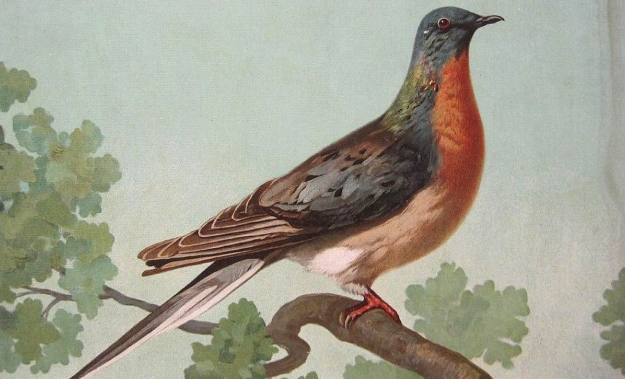
Driving Forces Behind the Alarming Rates of Extinction
A multitude of factors contribute to this surge in extinction rates. As human civilization expands and technology advances, our impact on the natural world becomes more pronounced. The delicate balance of ecosystems, honed over millennia, is now under threat. From direct interventions like habitat destruction to indirect consequences like climate change, our actions cast long and often destructive shadows. This section delves into the myriad reasons behind the accelerating decline in biodiversity, highlighting the pressing need for remedial action.

Habitat Destruction
The rapid expansion of human settlements, industrial areas, and agricultural lands has profoundly altered natural landscapes worldwide.
- Urban sprawl: Vast tracts of forests, essential for countless species, are cleared to pave the way for agricultural fields, infrastructure projects, and human settlements.
- Deforestation: Many species, adapted to very specific habitats, find themselves displaced, with their homes razed, leading to a decline in their populations and, in some cases, pushing them towards extinction.

Climate Change
The planet is warming, and with this rise in global temperatures, ecosystems are feeling the heat.
- Changing weather patterns & Shifting climatic zones: This metamorphosis often renders them inhospitable for the species that once thrived there.
- Fragmented Habitats: As habitats become fragmented and food sources dwindle, many species find their survival hanging in the balance, making them vulnerable to even minor environmental stresses.

Overexploitation
The insatiable human appetite for resources has led to the overharvesting of many species.
- Overfishing: The oceans bear testimony to the devastation caused by overfishing, with many fish stocks plummeting to alarmingly low levels.
- Illegal Wildlife Trade: The illegal wildlife trade, a multi-billion-dollar industry, has seen populations of iconic animals like rhinos and tigers shrink rapidly.

Pollution
Pollution can disrupt reproductive cycles, lead to birth defects, and poison food chains.
- Chemicals: Chemicals from industries, agriculture, and households make their way into rivers, lakes, and oceans, wreaking havoc on aquatic ecosystems.
- Plastics: The pernicious spread of plastics is a testament to our throwaway culture, with microplastics now found even in the deepest ocean trenches.
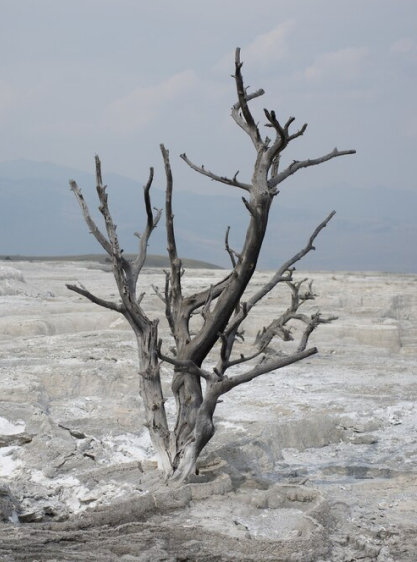

Invasive Species
Non-native species, when introduced to new habitats, often find them devoid of natural predators. This absence allows them to proliferate, outcompeting and sometimes even preying on local species.
- Invasive species: Invasive species can alter habitat structures, nutrient cycling, and even fire regimes, often leading to the decline or extinction of indigenous species.

Direct Human Activity
While humans have always interacted with nature, the scale and intensity of these interactions have changed dramatically in recent times.
- Infrastructure projects, driven by the need to connect and urbanize, often penetrate pristine habitats. Roads fragment migration paths, dams alter river ecosystems, and mining projects scar landscapes. Unregulated hunting and fishing, driven by both subsistence needs and recreational pursuits, further diminish wildlife populations. A case in point is the African elephant, which, despite its iconic status, faces existential threats.

Indirect Human Influences
Our footprint on the planet is not just direct; the repercussions of our actions often manifest in indirect ways. Industrial activities release greenhouse gases, accelerating climate change, which, in turn, alters habitats.
- The Great Barrier Reef, a marvel of biodiversity, stands as a grim reminder of these effects. Coral bleaching events, triggered by elevated sea temperatures due to global warming, threaten its very existence. Likewise, pollutants from agricultural runoff don’t just affect local water bodies.
- Fragmented Habitats: As habitats become fragmented and food sources dwindle, many species find their survival hanging in the balance, making them vulnerable to even minor environmental stresses.

Socio-Economic Factors
The juggernaut of globalization, coupled with increasing consumerism, has reshaped our relationship with nature.
- Prioritization on Financial Returns: Many current economic models prioritize immediate financial returns, often sidelining the long-term health of ecosystems. This shortsightedness exacerbates biodiversity depletion, creating a debt that future generations might find impossible to repay.
Consequences of Biodiversity Loss
The intricate tapestry of life on Earth is a result of countless years of evolution, where every thread represents a species, and every knot, an interdependency. The loss of even a single thread can compromise the structural integrity of this vast tapestry. Extinctions not only affect the balance within ecosystems but also have repercussions on global economies, human health, and cultural values. This interconnectedness underscores the magnitude and gravity of biodiversity loss.
Here are some of the many consequences of biodiversity loss:
Within each ecosystem, every organism, no matter how seemingly insignificant, holds a particular role or ‘niche.’ This role, like a piece in a vast jigsaw puzzle, ensures the smooth functioning of its environment. Consider the bees, for example. These tiny creatures play a monumental role in pollination, a process crucial for our food production. Their decline doesn’t just threaten the beauty of our gardens but directly impinges on our food security, potentially leading to malnutrition and food shortages.
Within each ecosystem, every organism, no matter how seemingly insignificant, holds a particular role or ‘niche.’ This role, like a piece in a vast jigsaw puzzle, ensures the smooth functioning of its environment. Consider the bees, for example. These tiny creatures play a monumental role in pollination, a process crucial for our food production. Their decline doesn’t just threaten the beauty of our gardens but directly impinges on our food security, potentially leading to malnutrition and food shortages.
Within each ecosystem, every organism, no matter how seemingly insignificant, holds a particular role or ‘niche.’ This role, like a piece in a vast jigsaw puzzle, ensures the smooth functioning of its environment. Consider the bees, for example. These tiny creatures play a monumental role in pollination, a process crucial for our food production. Their decline doesn’t just threaten the beauty of our gardens but directly impinges on our food security, potentially leading to malnutrition and food shortages.
Within each ecosystem, every organism, no matter how seemingly insignificant, holds a particular role or ‘niche.’ This role, like a piece in a vast jigsaw puzzle, ensures the smooth functioning of its environment. Consider the bees, for example. These tiny creatures play a monumental role in pollination, a process crucial for our food production. Their decline doesn’t just threaten the beauty of our gardens but directly impinges on our food security, potentially leading to malnutrition and food shortages.
Within each ecosystem, every organism, no matter how seemingly insignificant, holds a particular role or ‘niche.’ This role, like a piece in a vast jigsaw puzzle, ensures the smooth functioning of its environment. Consider the bees, for example. These tiny creatures play a monumental role in pollination, a process crucial for our food production. Their decline doesn’t just threaten the beauty of our gardens but directly impinges on our food security, potentially leading to malnutrition and food shortages.
Within each ecosystem, every organism, no matter how seemingly insignificant, holds a particular role or ‘niche.’ This role, like a piece in a vast jigsaw puzzle, ensures the smooth functioning of its environment. Consider the bees, for example. These tiny creatures play a monumental role in pollination, a process crucial for our food production. Their decline doesn’t just threaten the beauty of our gardens but directly impinges on our food security, potentially leading to malnutrition and food shortages.
Within each ecosystem, every organism, no matter how seemingly insignificant, holds a particular role or ‘niche.’ This role, like a piece in a vast jigsaw puzzle, ensures the smooth functioning of its environment. Consider the bees, for example. These tiny creatures play a monumental role in pollination, a process crucial for our food production. Their decline doesn’t just threaten the beauty of our gardens but directly impinges on our food security, potentially leading to malnutrition and food shortages.
Within each ecosystem, every organism, no matter how seemingly insignificant, holds a particular role or ‘niche.’ This role, like a piece in a vast jigsaw puzzle, ensures the smooth functioning of its environment. Consider the bees, for example. These tiny creatures play a monumental role in pollination, a process crucial for our food production. Their decline doesn’t just threaten the beauty of our gardens but directly impinges on our food security, potentially leading to malnutrition and food shortages.
Within each ecosystem, every organism, no matter how seemingly insignificant, holds a particular role or ‘niche.’ This role, like a piece in a vast jigsaw puzzle, ensures the smooth functioning of its environment. Consider the bees, for example. These tiny creatures play a monumental role in pollination, a process crucial for our food production. Their decline doesn’t just threaten the beauty of our gardens but directly impinges on our food security, potentially leading to malnutrition and food shortages.
Within each ecosystem, every organism, no matter how seemingly insignificant, holds a particular role or ‘niche.’ This role, like a piece in a vast jigsaw puzzle, ensures the smooth functioning of its environment. Consider the bees, for example. These tiny creatures play a monumental role in pollination, a process crucial for our food production. Their decline doesn’t just threaten the beauty of our gardens but directly impinges on our food security, potentially leading to malnutrition and food shortages.
The repercussions of dwindling biodiversity are not limited to the natural world alone. They seep into the very core of our societies, economies, and cultures, emphasizing the pressing need for conservation and sustainable practices.
Combatting the Biodiversity Loss Crisis
The gravity of the biodiversity loss crisis can often feel overwhelming. However, across the globe, a tapestry of dedicated individuals, organizations, and governments are hard at work to bring about positive change and counteract the decline.
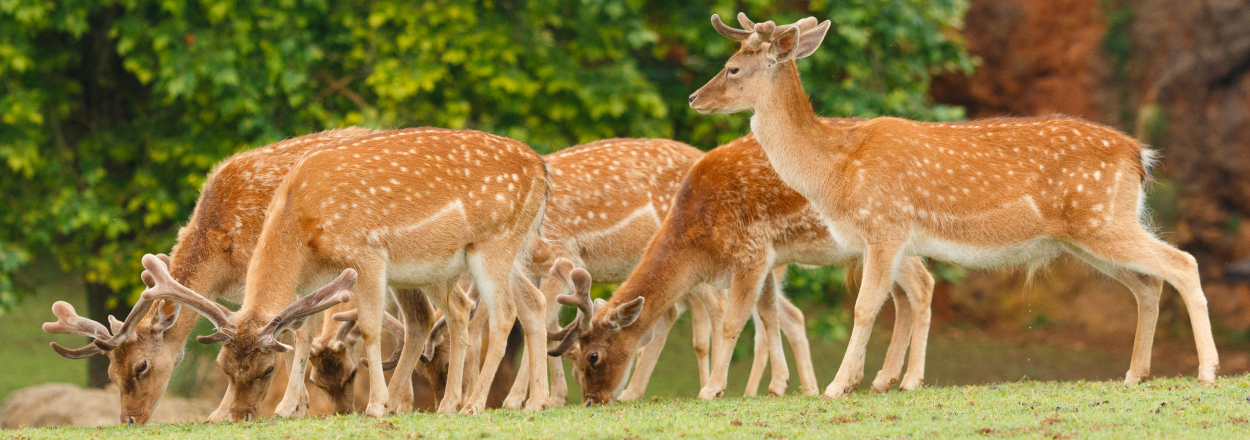
Habitat Restoration Initiatives
Conservationists are not only working to protect existing habitats but also restore those that have been damaged. For instance, degraded wetlands, once drained for agriculture, are being rejuvenated to bring back native plants and wildlife. These efforts ensure that species that were once displaced can return to their natural habitats, helping to rebalance ecosystems.
Grassroots Movements
Community-driven efforts are the unsung heroes in the fight against biodiversity loss. From villages in India planting thousands of trees to restore forests to communities in the Pacific setting up marine conservation areas, the power of local action cannot be underestimated. These movements highlight how sustainable practices, tailored to local needs and traditions, can bring about tangible change.
Breeding and Rehabilitation Programs
Wildlife experts are taking matters into their own hands by developing breeding programs for endangered species. Zoos, wildlife sanctuaries, and conservation centers worldwide have launched initiatives to breed animals in captivity and, when possible, reintroduce them to the wild. Such programs aim to bolster declining populations and ensure the survival of species teetering on the brink of extinction.
International Collaborations
Global challenges require global solutions. Agreements like the Convention on Biological Diversity bring nations together to set targets and share best practices. Such collaborations ensure that biodiversity conservation is a shared responsibility, transcending borders and political differences.
Establishing Protected Areas
National parks, marine reserves, and wildlife sanctuaries act as safe havens for flora and fauna. By cordoning off these areas from activities like logging, mining, and fishing, habitats remain undisturbed, ensuring that species within can thrive. The creation of migratory corridors between these protected areas further ensures that animals have the freedom to move, mate, and feed without human interference.
Educational and Awareness Campaigns
Knowledge is power. Across the globe, NGOs, schools, and community leaders are spearheading campaigns to educate the public about the importance of biodiversity. By fostering a deeper understanding of our natural world, they hope to inspire the next generation of conservationists.
Who is Working to Protect Biodiversity?
There is a large web of nonprofits, individuals, and governmental bodies focused on protecting biodiversity around the world.
Non-Profits
- World Wildlife Fund
- Conservation International
- Rainforest Alliance
- Natural Resources Defense Council
Individuals
- Jane Goodal
- Sylvia Earle
- E.O. Wilson
- Vandana Shiva
U.S. Government
- Endangered Species Act
- National Wildlife Refuge System
- Migratory Bird Treaty Act
- Lacey Act
Other Entities
- Aquariums & Zoos
- Wildlife Sanctuaries
- Private Breeders
- Research Universities
International Government Conventions
- Convention on Biological Diversity
- Convention on International Trade in Endangered Species of Wild Fauna and Flora (CITES)
- Ramsar Convention on Wetlands
- Bonn Convention (Convention on the Conservation of Migratory Species of Wild Animals
Success Stories in Bringing Species Back from the Brink of Extinction
There are several remarkable success stories of species that were once on the brink of extinction but, due to concerted conservation efforts, have seen a resurgence in their populations.
Some of the most inspiring include:
- American Bison: Threats: Overhunting and habitat loss in the 19th century. Recovery Actions: Establishment of reserves and breeding programs. Current Status: From fewer than 1,000 individuals, there are now over 500,000 bison in North America, though the majority are in commercial herds.
- California Condor: Threats: Lead poisoning, habitat destruction, and microtrash ingestion. Recovery Actions: A controversial decision was made in 1987 to capture all 27 remaining wild individuals and start a breeding program. Current Status: There are now over 400 individuals, with more than half of them living in the wild.
- Giant Panda Threats: Habitat loss due to logging and agriculture. Recovery Actions: Strict protection laws, establishment of panda reserves, and international collaboration. Current Status: In 2016, the IUCN reclassified the panda from “endangered” to “vulnerable.”
- Arabian Oryx: Threats: Hunting.Recovery Actions: Captive breeding and reintroduction programs. Current Status: Extinct in the wild by the early 1970s, reintroduced populations have grown enough for the species to be reclassified from “endangered” to “vulnerable.”
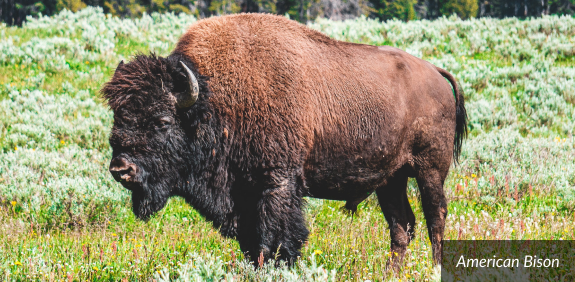
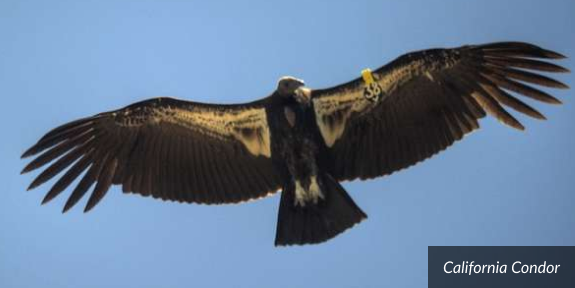
- Mauritius Kestrel: Threats: Habitat loss and introduced predators.Recovery Actions: Intensive management including captive breeding, supplementary feeding, and habitat restoration.Current Status: From just 4 known individuals in 1974, numbers have risen to over 300 birds.
- Golden Lion Tamarin: Threats: Habitat loss due to logging and urbanization.Recovery Actions: Captive breeding and reintroduction, habitat restoration, and community involvement.Current Status: The population has increased to over 3,200 individuals in the wild.
- Bald Eagle: Threats: Hunting, habitat loss, and the effects of the pesticide DDT.Recovery Actions: Legal protection, banning of DDT, and active nest protection and management.Current Status: From just 417 breeding pairs in the continental U.S. in 1963, there are now over 10,000 breeding pairs.
MORE READING
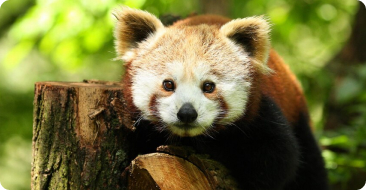
Biodiversity Hotspots: The Urgent Need to Protect Species at Risk
Biodiversity hotspots are distinct regions renowned for their exceptional richness in unique species, even while being under grave threat from human actions. Threatened by factors such as deforestation, urbanization, and… Read more
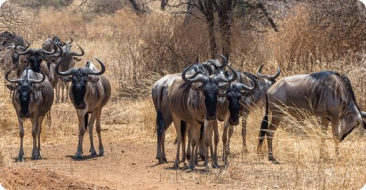
The Importance of Wildlife Corridors for Animal Migration
Biodiversity hotspots are distinct regions renowned for their exceptional richness in unique species, even while being under grave threat from human actions. Threatened by factors such as deforestation, urbanization… Read more
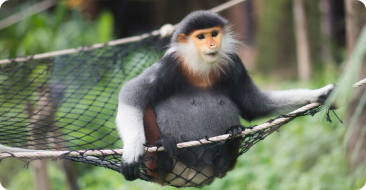
The Role of Zoos in Protecting Biodiversity
Biodiversity hotspots are distinct regions renowned for their exceptional richness in unique species, even while being under grave threat from human actions. Threatened by factors such as deforestation, urbanization, and… Read more
- 30 Environmental Activities to Feed Your Mind, Body & Soul - December 19, 2023
- Exploring the Wonders of Dark Sky Parks: A Stargazer’s Paradise - December 19, 2023
- Biodiversity Loss – A Crisis in the Making - December 12, 2023

